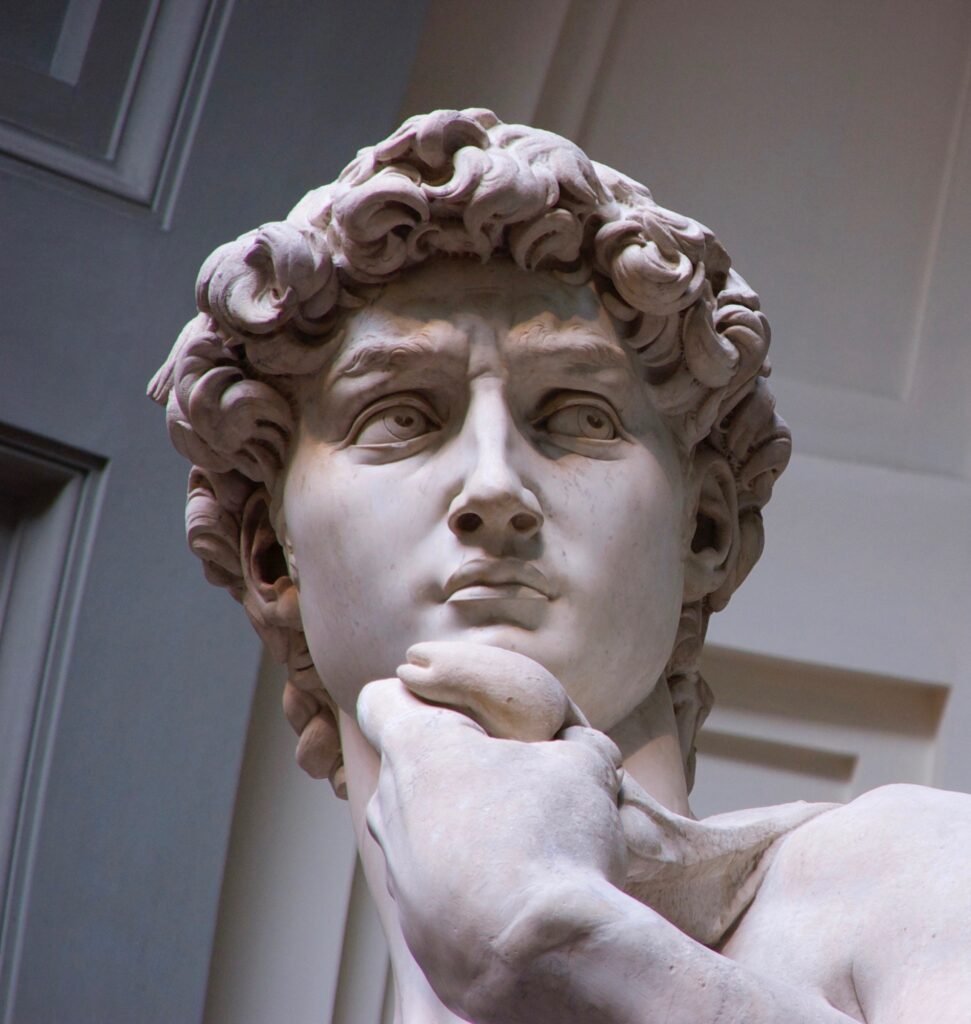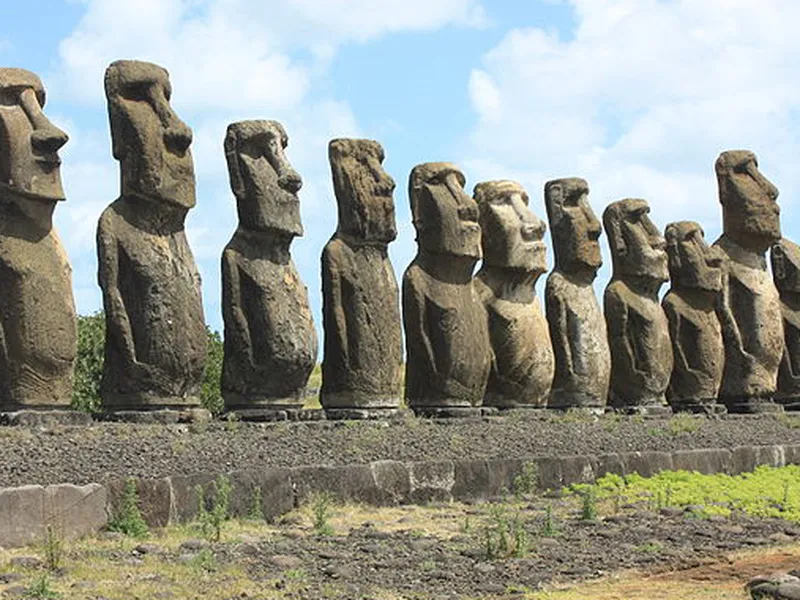Sculpture is an ancient and celebrated form of art, serving as a testament to human creativity and innovation throughout history. These three-dimensional art pieces can captivate and inspire, bridging the past with the present. In this blog, we will explore ten of the most famous sculptures of all time. Each a beacon of artistic mastery. These iconic creations not only represent extraordinary craftsmanship but also embody powerful narratives that have transcended generations.
The Timelessness of Sculptures
Sculptures have been integral to human expression and storytelling, capturing the imaginations of countless generations. These artistic masterpieces transcend time, allowing us to connect with various historical periods and cultural narratives through their enduring presence. As both art and artifact, sculptures play a critical role in understanding human history, emotions, and values.
Historical Significance
Throughout history, sculptures have served as a testament to the artistic skill and cultural priorities of civilizations. They often commemorate significant events, depict notable figures, or serve religious and spiritual purposes. Historical sculptures can provide insight into the social hierarchies, political climates, and technological advancements of their times. Through the ages, sculptors have utilized their craft to leave a lasting legacy. That speaks to the lessons and triumphs of human history.
Cultural Reflections
Sculptures also offer a fascinating window into the cultural facets of societies. They are not merely decorative, they are often rife with symbolism and serve as a reflection of the beliefs, myths, and values of the culture. That created them. Whether carved from stone, cast in bronze, or molded from clay, each sculpture tells a story of its people. Serving as a touchstone for identity and shared heritage. By studying these artworks, we gain a deeper understanding of the diversity of human expression. And the common threads of creativity across cultures.
1. The Great Sphinx of Giza

Standing guard over the Giza Plateau, the Great Sphinx is one of the most iconic sculptures in the world. It represents both the ingenuity and the mysticism of ancient Egypt, blending artistic prowess with monumental architecture.
Historical Context
Estimated to have been built around 2500 BC during the reign of Pharaoh Khafre. The Great Sphinx is among the oldest sculptures in existence. It is thought to embody the pharaoh’s might, linking him to the divine through its imposing presence. The sculptural marvel has withstood millennia, serving as a testament to the ancient Egyptians’ ambition and skill.
Architectural Details
Carved directly from the bedrock of the Giza Plateau. The Great Sphinx measures an impressive 240 feet in length and 66 feet in height. Though erosion has taken its toll over the centuries. The embodiment of a lion’s body with a human head still evokes an aura of regal authority. Its face, likely modeled after Pharaoh Khafre himself, projects strength and wisdom, commanding respect from all who gaze upon it.
Symbolic Meanings
The Great Sphinx is steeped in symbolic significance. As a fusion of human and animal, it represents the bridge between the earthly and the divine. The lion, a powerful protector, signifies strength and courage, while the human head symbolizes intelligence and leadership. Throughout history, the Sphinx has been a symbol of enigma, prompting questions and inspiring countless legends. Its majestic presence captures the eternal nature of human curiosity and the quest for understanding.
2. Michelangelo’s David

Renaissance Influence
Michelangelo’s David stands as one of the most paradigmatic symbols of Renaissance art and culture. Created between 1501 and 1504, this masterpiece exemplifies the period’s revival of classical antiquity and humanism. During the Renaissance, artists sought to capture the beauty of the human form and express the potential of the individual. Drawing inspiration from ancient Greek and Roman art. David embodies these ideals, portraying a figure not of biblical piety but of human strength and contemplative wisdom. Ready to face adversities with confidence.
Artistic Techniques
The creation of David reflects the extraordinary artistic techniques that Michelangelo employed. Carved from a single block of marble, the statue stands at an impressive 17 feet tall. Michelangelo skillfully contrasted the different textures of human skin, hair, and sinew to bring David to life. Showcasing his unparalleled talent in sculpting. The work’s contrapposto stance, where the weight is shifted onto one le. Gives the statue a dynamic and realistic posture, further enhancing the illusion of movement. Through such techniques, Michelangelo rendered an anatomically precise and yet idealized version of the human body.
Cultural Legacy
Over the centuries, David has transcended its artistic roots to become a cultural icon. It represents not only a pivotal moment in art history but also a symbol of human achievement and resilience. The statue has inspired countless artists and thinkers, fostering a dialogue about humanity’s place in the world. Situated in Florence—a city at the heart of the Renaissance—David continues to draw millions of visitors. Affirming its enduring relevance and impact on both art and culture.
3. Venus de Milo

Discovery and Restoration
The Venus de Milo, one of the most celebrated sculptures of ancient Greece. It was discover in 1820 on the island of Milos in the Aegean Sea. This remarkable find was initially unearth by a local farmer. And it soon captured the attention of numerous scholars and art enthusiasts. Despite missing its arms and parts of its original pedestal, the sculpture’s allure remains unchallenged. Over time, experts have engaged in various restoration efforts to preserve the statue’s integrity while respecting its authentic charm.
Iconic Features
The Venus de Milo is renown for its exquisite representation of the female form. Standing at six feet eight inches tall, the statue is characterize by its poise and graceful posture.The sculptor, traditionally believed to be Alexandros of Antioch. Expertly captured the flowing drapery of the goddess’ garment, emphasizing the harmony and balance of the figure. The face of Venus reflects classical ideals of beauty with its smooth features. Serene expression, and perfectly proportioned elements, contributing to the statue’s iconic status.
Interpretation of Beauty
The Venus de Milo ignites ongoing discussions about the ideals of beauty and femininity in ancient and modern contexts. It represents an idealized vision of beauty that has influenced generations, embodying timeless elegance and grace. While some interpretations suggest that the sculpture depicts Aphrodite. The Greek goddess of love and beauty, others propose it could represent Amphitrite, a sea goddess revered on Milos. Regardless of identity, the Venus de Milo continues to provoke fascination and admiration. Serving as an enduring testament to the artistry of ancient Greece.
4. The Thinker by Auguste Rodin

Origins and Inspiration
The Thinker, one of the world’s most recognizable sculptures, was craft by the renowned French artist Auguste Rodin. Originally conceive in 1880 as part of a larger work called The Gates of Hell, The Thinker was meant to represent the Italian poet Dante himself, pondering over the fate of those in Hell. This sculpture evolved into an independent piece in 1904, symbolizing the immense capacity of human thought. Rodin drew inspiration from Dante Alighieri’s Divine Comedy, infusing the work with intellectual contemplation and intense introspection.
Technique and Style
Rodin’s technique in creating The Thinker merged classic and modern styles, which is apparent in the detailed and expressive form of the sculpture. Cast primarily in bronze, The Thinker’s muscular figure and dynamic posture highlight Rodin’s outstanding ability to capture the human form in a state of deep concentration. The rough texture and exaggerated anatomy are a testament to Rodin’s unique approach, where every chiselled feature and shadow plays a role in emphasizing the profoundness of thought.
Symbolism in Modern Thought
Over the years, The Thinker has transcended its original context and become a universal symbol of contemplation and philosophical inquiry. Despite its initial connection to Dante’s literary work, the sculpture broadly represents the human capacity for reflective thought, intellectualism, and creativity. Breaking free from its 19th-century origins, The Thinker continues to inspire modern audiences, serving as an iconic emblem of the power and complexity of the human mind.
5. The Statue of Liberty

Historical Background
The Statue of Liberty stands as a monumental symbol of freedom and democracy. Gifted by France to the United States in 1886, it was meant to commemorate the enduring friendship between the two nations. The statue’s full name is “Liberty Enlightening the World,” reflecting a shared vision of liberty and justice. Fashioned during a period of increasing American immigration, Liberty greeted millions of immigrants seeking new opportunities in the land of the free.
Construction and Design
The Statue of Liberty was design by French sculptor Frédéric Auguste Bartholdi, with its intricate metal framework engineer by Gustave Eiffel, who later created the Eiffel Tower. Constructed from copper sheets riveted to an iron framework, this grand sculpture stands at 305 feet tall from base to torch. The construction exemplified innovation and collaboration, using a technique of metalworking that allowed for its robust, hollow structure. The design combines neoclassical elements with symbolic imagery, such as the broken chains at its feet, representing the abolition of tyranny.
Symbolism of Freedom
The Statue of Liberty serves as a powerful emblem of freedom and democracy, her torch enlightening the world with the ideals of hope and opportunity. Holding the Declaration of Independence in her left hand, she embodies the promise of a nation founded on equality and justice. To countless immigrants, she is a beacon of hope and a guide to a new life free from oppression. Today, the Statue of Liberty remains an enduring symbol of America’s commitment to freedom and human rights, resonating with people across the globe as a reminder of the universal quest for liberty.
6. The Moai Statues of Easter Island

The Moai statues of Easter Island are shroud in mystery and intrigue, standing as silent sentinels on Rapa Nui, a remote island in the southeastern Pacific Ocean. These monumental sculptures have captivated historians, archaeologists, and tourists alike for centuries.
Creation Theories
The origin of the Moai statues has been the subject of numerous theories and scholarly debates. Some suggest that the sculptures were commission by Polynesian settlers between 1400 and 1650 CE as representations of deified ancestors. Theories often propose that the Moai were carved from volcanic tuff by the Rapa Nui people using simple stone tools and were transport to their final locations using sledges and ropes. However, how these massive figures were moved, given their weight and size, continues to fuel speculation and wonder.
Cultural Importance
To the Rapa Nui people, the Moai statues hold deep cultural significance. They are believed to embody the spirit of ancestors and chiefs, acting as protectors and mediators between the living and the spiritual world. Positioned to look inland over the island, the Moai are seen not only as cultural artifacts but also as an integral part of Rapa Nui heritage and identity. This cultural connection is further emphasized by the fact that the word “Moai” means “statue” in the Rapa Nui language, reflecting their monumental role in society.
Preservation Efforts
Preserving the Moai statues has been a significant challenge due to the effects of natural erosion and human impact. Over the years, various preservation efforts have been implemented, including restoration projects funded by international organizations and collaborations with the Rapa Nui community. Protective measures have been taken to ensure these statues withstand the test of time, allowing future generations to appreciate their historic and cultural value.
7. Christ the Redeemer

Overlooking the vibrant city of Rio de Janeiro, Brazil, Christ the Redeemer stands as a beacon of faith and architectural brilliance. This iconic sculpture is a marvel of modern engineering and a testament to the unifying power of religious symbolism.
Architectural Feats
The construction of Christ the Redeemer was an extraordinary architectural achievement, especially considering it was completed in 1931. Crafted from soapstone and reinforced concrete, it stands 98 feet tall, not including its 26-foot pedestal. The statue’s arms stretch wide, spanning 92 feet, symbolizing peace and friendship. Engineers and sculptors faced significant challenges, including ensuring structural stability on the steep Corcovado Mountain where it resides, and transporting materials to the summit through rugged terrain.
Religious Significance
Christ the Redeemer serves as a profound symbol of Christianity, representing the openness and welcoming nature of Jesus Christ. The statue is a reflection of Brazil’s Christian heritage, standing as a constant reminder of the religion’s teachings of love, hope, and redemption. For millions of visitors and local residents alike, Christ the Redeemer offers a place for reflection, prayer, and contemplation.
Global Recognition
Declared one of the New Seven Wonders of the World in 2007, Christ the Redeemer has gained global recognition and admiration. It attracts millions of visitors each year, drawn not only by its religious significance but also by the breathtaking views it offers of Rio de Janeiro. The statue is frequently featured in cultural, artistic, and popular media, reinforcing its status as a universal symbol of peace and acceptance.
8. The Terracotta Army

Historical Discovery
Unearthed in 1974 by local farmers in Xi’an, China, the Terracotta Army is a monumental archaeological find that redefined historical understanding. This vast collection of terracotta sculptures, buried with China’s first Emperor, Qin Shi Huang, was crafted to accompany him into the afterlife. The site contains thousands of life-sized figures, including warriors, horses, and chariots, stretching over 20,000 square meters. The discovery not only provided insight into the practices and beliefs of the Qin Dynasty but also highlighted the advanced techniques and organizational capabilities of this ancient civilization.
Craftsmanship and Detail
The craftsmanship of the Terracotta Army is truly remarkable. Each figure was painstakingly created with a unique combination of facial features, expressions, and stances, reflecting a variety of ethnic groups and ranks. This individuality suggests a highly sophisticated hand production system within workshops, where artisans achieved realism and intricate detail using a blend of modular construction and personalization. The precision and artistry demonstrate the exceptional skill and dedication of the craftsmen, with each statue originally painted in vibrant colors, though most of the pigment has faded over time.
Cultural Impact
The cultural impact of the Terracotta Army cannot be overstated. It is not only a stunning artistic accomplishment but also a manifestation of the Emperor’s power and vision. Today, this historical treasure attracts millions of visitors from around the world, drawn to its grandeur and mystery. The site has become a symbol of Chinese cultural heritage and an enduring testament to human creativity and ambition. Moreover, the Terracotta Army has prompted further global appreciation for ancient Chinese history and has fostered a greater understanding of the era’s cultural, political, and social dynamics.
9. Bust of Nefertiti

The Bust of Nefertiti , one of the most iconic artifacts from ancient Egypt, represents the great beauty and power of Queen Nefertiti, the wife of Pharaoh Akhenaten. Discovered in 1912 by German archaeologist Ludwig Borchardt in Amarna, the bust is celebrated for its exquisite craftsmanship and lifelike details.
Historical Significance
Nefertiti lived during the 14th century BCE and was a central figure in the Amarna Period, a time marked by significant religious and artistic changes. The bust is believed to symbolize not only her beauty but also her influential role in the radical shift toward monotheism initiated by her husband, who worshipped the sun disk, Aten. The artifact has captivated historians and art enthusiasts alike, shedding light on the era’s cultural and political dynamics.
Artistic Details
Carved from limestone and originally painted with vibrant colors, the Bust of Nefertiti stands at about 20 inches tall. Its remarkable detail, including the intricate headdress and the soft contours of her face, exemplifies the artistry of ancient Egyptian sculptors. The use of symmetry and the refined features reflect the ideals of beauty in that time, showcasing both the artistic skill and the cultural values of ancient Egypt.
Legacy
Today, the Bust of Nefertiti is housed in the Neues Museum in Berlin and remains a symbol of ancient Egyptian art and heritage. It continues to inspire discussions about gender, power, and identity in both ancient and contemporary contexts, making it a timeless piece of history that transcends its origins.
10. Pablo Picasso, Guitar

History Background
Pablo Picasso’s “Guitar,” created in 1912, marks a significant turning point in the artist’s career and the evolution of modern art. This work emerged during the Cubist movement, which Picasso co-founded alongside Georges Braque. The piece reflects the innovative spirit of the early 20th century, where traditional notions of representation were being challenged. “Guitar” is considered one of Picasso’s early forays into three-dimensional art, moving away from the two-dimensional canvases that dominated his earlier works. By utilizing materials like cardboard and wood, Picasso sought to break the boundaries between painting and sculpture, setting the stage for future developments in collage and assemblage.
Artistic Details
In “Guitar,” Picasso employs a fragmented approach characteristic of Cubism, where the form is dissected and reassembled from multiple perspectives. The use of simple geometric shapes—like rectangles and triangles—creates a sense of dynamism and movement. The muted color palette, primarily consisting of browns and grays, emphasizes the sculpture’s textural qualities rather than its vibrant colors. The layering of materials adds depth and invites viewers to engage with the piece from different angles. This innovative technique not only challenges the viewer’s perception of space but also transforms a conventional object—a musical instrument—into a complex visual experience, demonstrating Picasso’s mastery in merging form, function, and abstraction.
Conclusion
In conclusion, these 10 top famous sculptures of all time are more than just artistic creations; they are testaments to human creativity and expression through the ages. Each piece not only captures the essence of its time but also continues to inspire awe and admiration today. These iconic sculptures serve as a bridge between past and present, offering glimpses into history while highlighting the timelessness of artistic mastery. As we appreciate these renowned masterpieces, we celebrate the enduring spirit of art that unites cultures and generations around the globe.



